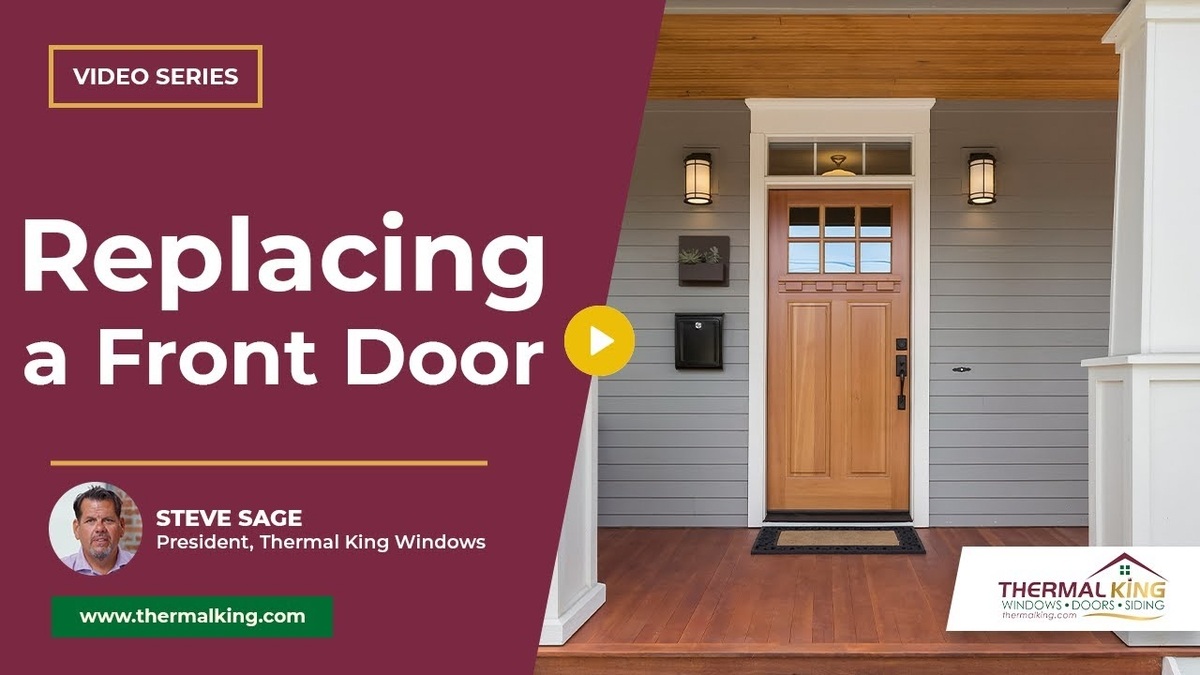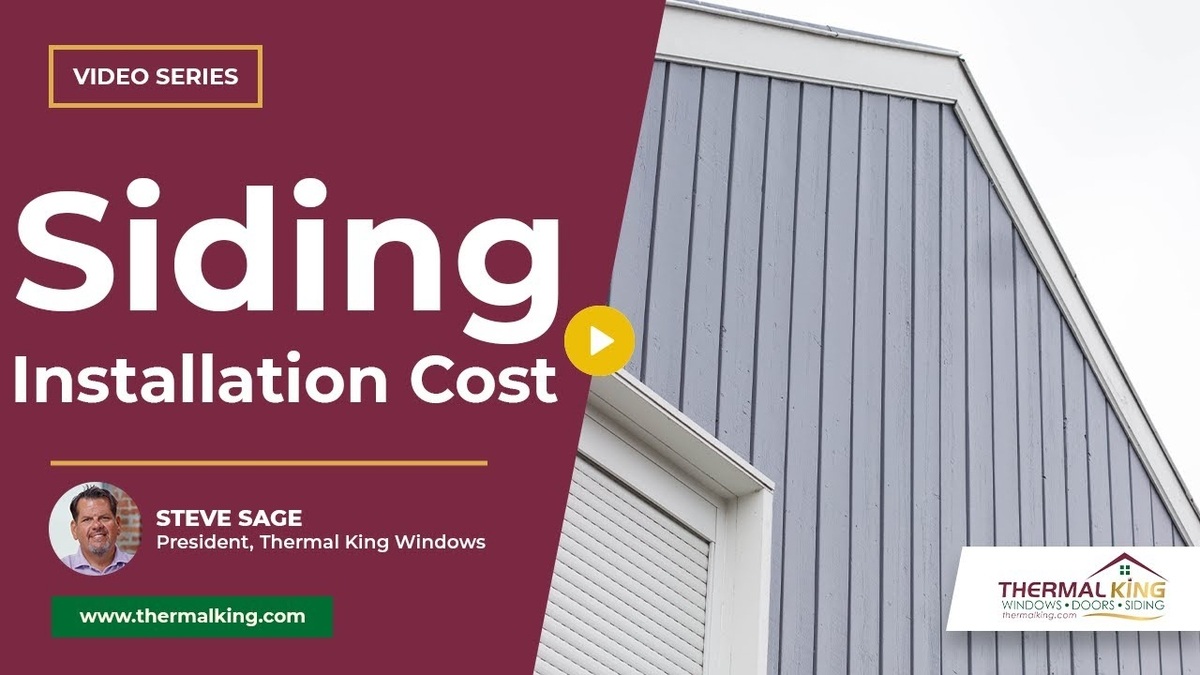Your home’s siding is more than just an aesthetic feature; it serves as a critical barrier protecting your property from the elements. Over time, however, wear and tear can compromise its effectiveness, leading to costly repairs and decreased curb appeal.
Thermal King Windows has helped thousands of Leawood and Kansas City homeowners navigate their window and siding replacements. This article aims to help you recognize when it’s time to replace your siding. Here are five clear signs that indicate you need new siding.
1. Visible Damage and Deterioration
One of the most obvious indicators that your siding needs replacement is visible damage. This can take many forms, including cracks, warping, holes, or missing sections. Weather conditions such as heavy rain, hail, and sun exposure can cause materials like vinyl, wood, or fiber cement to degrade over time.
For example, wood siding is particularly susceptible to rot and insect damage, while vinyl siding can crack or become brittle in extreme temperatures. If you notice any of these issues, it’s important to act quickly. Damaged siding not only looks unsightly but can also allow water to seep behind the walls, leading to mold growth and structural damage.
Regularly inspecting your siding for these kinds of problems can help you catch issues early. A thorough walk around your home, especially after severe weather, can reveal areas that need attention. If damage is widespread or severe, replacement is often the most cost-effective solution.
In addition to visible damage, consider the age of your siding. Most siding materials have a lifespan that varies significantly; for instance, wood siding may last around 20 to 40 years, while vinyl can last up to 60 years with proper maintenance. If your siding is approaching or has surpassed its expected lifespan, it may be time to evaluate its condition more critically. Furthermore, advancements in siding technology mean that newer materials offer better insulation and durability, which can enhance your home’s energy efficiency and curb appeal.
Moreover, the aesthetic aspect of your home should not be overlooked. Faded or chipped paint on siding can detract from your property’s overall appearance and may lower its market value. If your home is showing signs of wear, consider how a fresh new siding installation can not only protect your home but also elevate its visual appeal, making it stand out in the neighborhood. Investing in quality siding can also provide peace of mind, knowing that your home is better protected against the elements and potential pest infestations.
2. Fading or Discoloration
Over time, siding can lose its original color due to prolonged exposure to sunlight and harsh weather conditions. Fading or uneven discoloration is a common problem, especially with vinyl and wood siding. While repainting can sometimes restore the appearance of wood siding, vinyl siding cannot be repainted effectively, making replacement the only viable option.
Discoloration may also indicate underlying issues such as mold, mildew, or algae growth, particularly in humid climates. These organisms not only stain siding but can also degrade the material, reducing its lifespan. If cleaning doesn’t restore the siding’s appearance, it may be time to consider new siding.
Beyond aesthetics, faded siding can reduce your home’s curb appeal and potentially lower its market value. According to a 2023 survey by the National Association of Realtors, homes with well-maintained exteriors, including siding, tend to sell faster and at higher prices. Investing in new siding can therefore be a smart financial decision.
Moreover, the type of siding material you choose can significantly impact its resistance to fading. For instance, fiber cement siding is known for its durability and ability to hold color longer than traditional wood or vinyl options. Homeowners may want to consider this when selecting new siding, as it not only enhances the look of the home but also offers long-term value and lower maintenance costs.
It’s also worth noting that some manufacturers offer siding with UV-resistant coatings designed to minimize fading. These advanced technologies can help maintain the vibrancy of your siding for years, making it a worthwhile investment for those looking to preserve their home’s exterior. Regular inspections and maintenance can further extend the life of your siding, ensuring that it remains an attractive feature of your home for many years to come.
3. Increased Energy Bills
Your siding plays a crucial role in insulating your home and maintaining energy efficiency. When siding becomes damaged or aged, its ability to keep heat in during winter and out during summer diminishes. This can lead to noticeable spikes in your heating and cooling costs.
For instance, gaps, cracks, or loose panels allow air to escape, forcing your HVAC system to work harder. According to the U.S. Department of Energy, properly installed and maintained siding can reduce energy loss by up to 20%. If you’ve noticed a steady increase in your energy bills without any changes in usage, your siding might be the culprit.
Upgrading to modern siding materials with better insulation properties, such as insulated vinyl or fiber cement, can significantly improve your home’s energy efficiency. This not only reduces utility bills but also enhances indoor comfort year-round.
In addition to the direct impact on energy bills, the type of siding you choose can also affect your home’s overall environmental footprint. Energy-efficient siding materials often require less energy to produce and install, which can contribute to a lower carbon footprint. Furthermore, many of these materials are designed to last longer than traditional options, reducing the frequency of replacements and the associated waste. This makes investing in quality siding not just a financial decision, but an environmentally conscious one as well.
Moreover, the aesthetic appeal of your home can also play a role in energy efficiency. Well-maintained, insulated siding can enhance the overall appearance of your property, potentially increasing its market value. Homebuyers today are often looking for energy-efficient features, and having modern siding can make your home more attractive in a competitive real estate market. As such, investing in quality siding is not only a smart move for your wallet but also a strategic decision for the future resale value of your home.
4. Moisture Problems and Mold Growth
One of the most serious signs that your siding needs replacement is the presence of moisture problems. When siding fails to protect your home from rain and humidity, water can infiltrate the walls, leading to mold and mildew growth. This not only damages your home’s structure but also poses health risks to your family.
Common signs of moisture issues include peeling paint, bubbling siding, musty odors, and visible mold spots on or near the siding. In some cases, you might notice water stains inside your home, which can indicate that moisture has penetrated beyond the exterior walls.
Ignoring these signs can lead to costly repairs, including framing replacement and remediation of mold infestations. Replacing old or damaged siding with moisture-resistant materials and ensuring proper installation with effective water barriers can prevent these problems from recurring.
Furthermore, the presence of moisture can create an environment conducive to pests, such as termites and carpenter ants, which thrive in damp conditions. These pests can exacerbate the damage to your home, leading to even more extensive repairs. Homeowners should be vigilant about checking for signs of pest activity in conjunction with moisture issues, as they often go hand in hand. Regular inspections of your siding, especially after heavy rains or storms, can help catch these problems early before they escalate into larger concerns.
Additionally, the type of siding you choose can significantly impact your home’s resistance to moisture. For instance, fiber cement siding is known for its durability and moisture resistance, making it a popular choice among homeowners looking to mitigate these risks. On the other hand, traditional wood siding, while aesthetically pleasing, requires more maintenance to prevent moisture-related issues. Understanding the materials available and their respective benefits can empower homeowners to make informed decisions that protect their investment and ensure a safe living environment.
5. Outdated Style and Poor Curb Appeal
While functionality is paramount, the appearance of your siding also plays a significant role in your home’s overall value and your enjoyment of the property. If your siding looks outdated, faded, or mismatched, it can detract from your home’s curb appeal and make it feel less inviting.
Trends in siding materials and colors evolve over time. For example, many homeowners are now opting for durable fiber cement siding or high-quality vinyl with modern textures that mimic wood grain. These options offer both improved aesthetics and longevity.
Investing in new siding can dramatically transform your home’s exterior, boosting its market value and making it stand out in your neighborhood. According to Remodeling Magazine’s 2023 Cost vs. Value Report, siding replacement ranks among the top home improvement projects for return on investment, often recouping over 75% of the cost at resale.
Siding Replacement in Leawood and the Kansas City area
Determining whether you need new siding involves assessing both the visible condition and the performance of your current exterior. If you notice any of the signs discussed—visible damage, fading, rising energy bills, moisture problems, or outdated style—it’s wise to consult with a professional siding contractor.
Experts can provide a thorough inspection, recommend the best materials for your climate and budget, and ensure proper installation. Taking action early can prevent more extensive damage, improve your home’s energy efficiency, and enhance its beauty for years to come.
If you’re ready to get started on your siding project, contact the experts at Thermal King Windows today for a free estimate and consultation.



